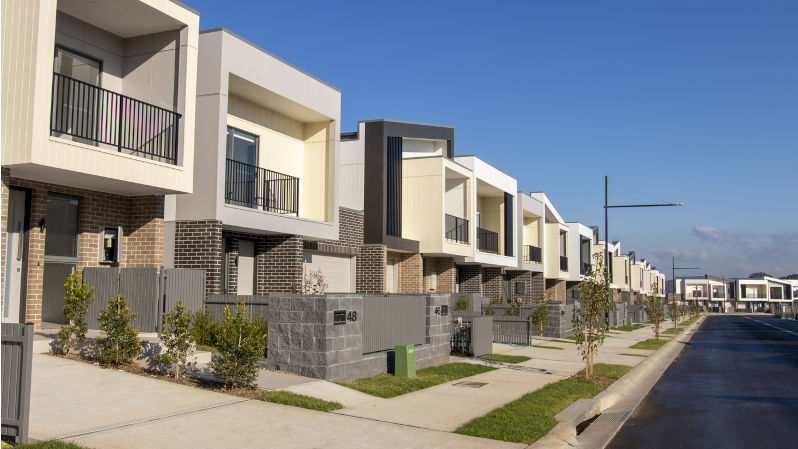Start at the bottom to build housing
June 23, 2025
Starting at the bottom is the way to rebalance Australia’s housing system.
Much has been written about Australia’s housing woes, much of it is concentrated on the planning system and its red tape strangling the development industry. The latest to echo that rhetoric is Labor Housing Minister Clare O’Neil. on the ABC on 7 June.
While the planning system is partly responsible, there are greater enemies of housing fairness than our planning systems and their requirements, most of which have been created to help maintain reasonable processes when building. Issues there are, but not commensurate with the bleating by industry about them.
At the heart of our problems has been a failure to recognise the importance of social (public and community) housing, including the building of sub-market products for the ever-growing number of households reliant on low incomes and rent.
Labor’s current commitments are laudable, but still far short of what is required. The share of social housing in Australia as a proportion of all housing is about 4%, when it needs to be 10%. At its highest point in 1996, it was about 6% and despite a couple of lifts (Rudd’s stimulus and the boost to community housing via the National Rental Affordability Scheme) it has now declined to the point of abject failure.
The Morrison Treasury introduced the National Housing and Finance & Investment Corporation, now Housing Australia, which created a housing finance architecture and manages the Housing Futures Fund, along with other measures introduced by Labor. States have begun to lift their game but the catch-up is so great the decline continues despite these efforts.
The underlying problem is too large for governments alone to tackle, and one missing piece of architecture to fix the problem is to meet the subsidy required that could unlock vast capital from superannuation and other instruments. Housing Australia goes some way towards this but is still too limited.
The other end of this is our continued inflationary policy settings which encourage over-investment in private rental, by individual investors, based on the misguided notion that Australians (perhaps it’s really our political class) are too addicted to negative gearing combined with capital gains tax (CGT) discounts to even consider any changes to these over-generous, inflationary tax benefits.
The truth is the property industry is a powerful enemy to make and will campaign strongly to ensure these benefits keep flowing, largely to the rich, despite the fact they continue to distort our housing markets, pushing them entirely out of reach of the majority of the younger generation.
The irony is that tackling CGT, in particular, would generate the revenue required to meet the subsidy gap that would unlock the capital available in superannuation needed to rebuild our social housing stock and help create more owners and fewer investors, but that would require courage and the ability to argue its fairness, currently absent in our treasurer and prime minister.
Rebuilding social housing would take pressure out of the market, ease the rental crisis and, over the long term, 20-30 years, help make housing prices stable and allow growing wages and incomes the chance to catch up with house prices.
There are a number of ways this could be done — doubling or quadrupling the Housing Australia Future Fund (HAFF) as advocated by peak bodies. While borrowing to invest to spend the returns is a roundabout way of funding social housing, it maintains the illusion of being off-budget. Direct capital grants to community housing providers, as part of budget spending, would be more efficient and signal a more serious intent to do something.
Re-establishing a program like the National Rental Affordability Scheme, targeting the many lower-income households who don’t qualify for social housing but who desperately need something between social housing and full-market rental, would also help. This could be done by expanding HAFF and encouraging more mixed tenure approaches within projects.
Shifting investment from individual investors to institutional investors would help, but also requires adjusting tax settings and would improve rental housing overall. It could provide some justification for re-examining CGT and NG settings. This would also help improve productivity in the building industry, which is woefully low.
One planning reform consistently opposed by much of the industry is to mandate affordable rental housing within planning schemes; so-called inclusionary zoning would ensure a level of social and affordable housing, appropriately managed by community providers, is continually added to supply.
So while there are planning issues to address, let’s not pretend that the development industry doesn’t also control much land supply and that political parties maintain our expensive fictions around Australia’s housing crisis. While politicians fiddle, the numbers experiencing homelessness grow and so does the despair that goes with it. As Guy Johnson once noted “Homelessness is structural violence” or at least an inbuilt structural requirement like unemployment if we maintain our current course.
Adrian Pisarski is the chairperson of Jacaranda Housing Company and was both chief executive and chairperson of National Shelter between 2004-2022.
The views expressed in this article may or may not reflect those of Pearls and Irritations.
